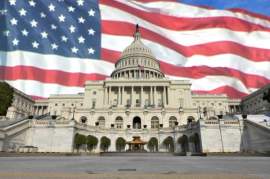
Racial Segregation Explained

Popular In Constitution
Purpose Of Lifetime Appointment And Pros And Cons Enumerated Powers Bicameral Legislature Background Article 3 Of The Constitution We The People 1st Amendment Who Wrote The Constitution Judicial Review Equal Protection Clause Three Fifths Compromise 5th Amendment 10th Amendment
Racial segregation, which was seen as the legal separation of different races of people due only to their specific background, was first instituted by the "Jim Crow laws". These were instituted and employed from the end of the 1800s until the latter part of the 1900s. These laws set forth that all public areas of interest be racially segregated. Although whites believed this as an obvious effective institution of the belief in the statements of "separate but equal" doctrine, which used to take up residence within United States Constitutional law, all that occurred as a result was more harm than anything else.
As a result of the passing of such laws of segregation, individuals were subjected to maltreatment, as well as a plethora of serious disadvantages. These laws, which imposed segregation upon venues such as public transportation and public restrooms, operated only to worsen the conditions for blacks in a white-dominated society.
In reference to that of public transportation, one Supreme Court Case may be forever remembered for its upholding of such adherence to segregation. Plessy v. Ferguson represented a case in which a partially black individual had entered a railroad car specified as a whites-only car. Despite the minor fraction of black racial origin he possessed, he was considered colored, and therefore, in violation of what is set forth by the Jim Crow Laws as well as that of the statutes of "separate but equal" public policy. His attempts at seeking out the violation of his own Thirteenth Amendment as well as Fourteenth Amendment rights were, thus, in vain. This represented a landmark case in which the ability to segregate was maintained as Constitutional.
Another such equally significant Supreme Court case was that of Brown v. Board of Education, yet with a striking difference. In this case, the Court ruled that segregation within public schools was unconstitutional. This was due to the fact that it stood by the belief that, when going about means to segregate races within schools, black children were denied the equal right to educational opportunities. This case paved the way towards the elimination of segregation in various aspects of life. According to the ruling, the issue was not just that races were segregated, but that educational facilities suffered as a result, thus, leading to inequality in reference to education.
One specific aspect of everyday life that was affected by such an overturning of rule was that of anti-miscegenation laws, which looked to segregate races in terms of marriage, cohabitation, and sex. These laws were passed as specific to each State and under their discretion in terms of legislation. State law deemed a violation of such laws as a felony, and thus, prosecuted individuals accordingly.
A landmark case concerning these laws came in the form of Loving v. Virginia, in which anti-miscegenation laws were ruled as unconstitutional. These aspects that highlight past actions to segregate represent a concurrently storied past that allows legislators today the ability to take pride in how far we've come in terms of the abolition of such practices of segregation.
NEXT: What Is Tax and Spend Power





















